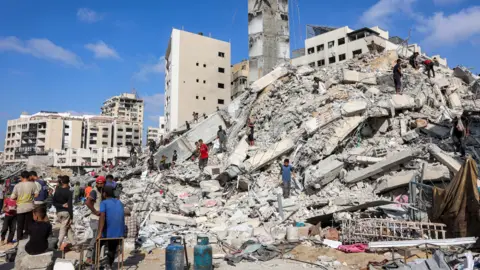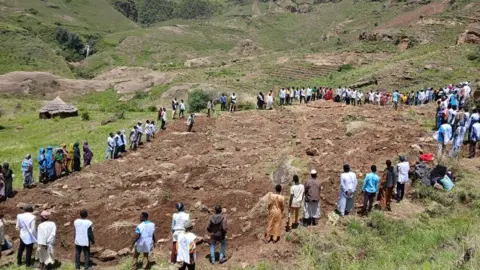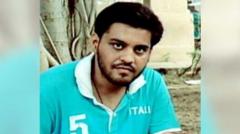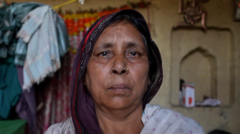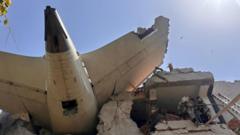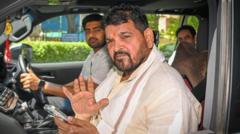On Saturday, a stampede at New Delhi's main railway station led to the tragic deaths of 15 Hindu pilgrims who were anxiously trying to board trains en route to the Kumbh Mela, one of the largest religious festivals globally. According to reports from local media, another 15 individuals sustained injuries during the chaos.
Atishi, the caretaker chief minister of the Delhi region, shared updates with the press outside a local hospital, confirming the number of casualties. Prime Minister Narendra Modi expressed his condolences via social media, stating that the government is working diligently to support those affected by this unfortunate event. Simultaneously, Railway Minister Ashwini Vaishnaw announced that an investigation has been launched to understand the circumstances surrounding the stampede.
Eyewitness accounts describe an unusually large crowd at the station caused by delays in train schedules leading to the Kumbh Mela. The Ministry of Railways later implemented measures to alleviate the pressure, dispatching additional trains.
The Kumbh Mela, which commenced in mid-January and will conclude later this month, is expected to attract over 400 million attendees over its six-week duration. The festival this year is being held in Prayagraj, Uttar Pradesh, where the Ganges and Yamuna Rivers converge, believed to be joined by a mythical river, the Saraswati. Devotees flock to this sacred site to immerse themselves in the holy waters, with the belief that doing so absolves them of sins.
This year's gathering, termed the Maha Kumbh, is larger than usual, partially attributed to a rare celestial alignment occurring once every 144 years, presenting substantial logistical challenges for authorities.
Past tragedies have also marred this sacred event; last month, 30 pilgrims lost their lives in a stampede during the rush to bathe, while the 2013 Mela saw 42 casualties at Prayagraj's station. In total, historical records indicate numerous tragic incidents linked to crowd management at these events, dating back to the first Kumbh Mela in 1954, which resulted in hundreds of deaths.
Atishi, the caretaker chief minister of the Delhi region, shared updates with the press outside a local hospital, confirming the number of casualties. Prime Minister Narendra Modi expressed his condolences via social media, stating that the government is working diligently to support those affected by this unfortunate event. Simultaneously, Railway Minister Ashwini Vaishnaw announced that an investigation has been launched to understand the circumstances surrounding the stampede.
Eyewitness accounts describe an unusually large crowd at the station caused by delays in train schedules leading to the Kumbh Mela. The Ministry of Railways later implemented measures to alleviate the pressure, dispatching additional trains.
The Kumbh Mela, which commenced in mid-January and will conclude later this month, is expected to attract over 400 million attendees over its six-week duration. The festival this year is being held in Prayagraj, Uttar Pradesh, where the Ganges and Yamuna Rivers converge, believed to be joined by a mythical river, the Saraswati. Devotees flock to this sacred site to immerse themselves in the holy waters, with the belief that doing so absolves them of sins.
This year's gathering, termed the Maha Kumbh, is larger than usual, partially attributed to a rare celestial alignment occurring once every 144 years, presenting substantial logistical challenges for authorities.
Past tragedies have also marred this sacred event; last month, 30 pilgrims lost their lives in a stampede during the rush to bathe, while the 2013 Mela saw 42 casualties at Prayagraj's station. In total, historical records indicate numerous tragic incidents linked to crowd management at these events, dating back to the first Kumbh Mela in 1954, which resulted in hundreds of deaths.










